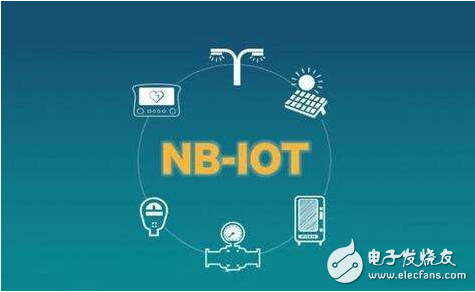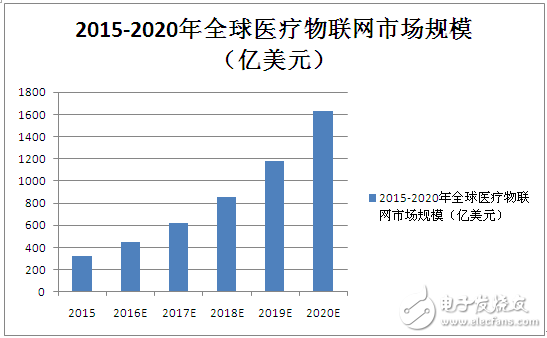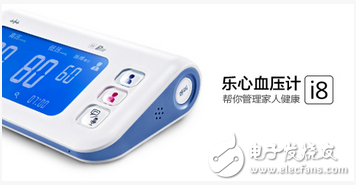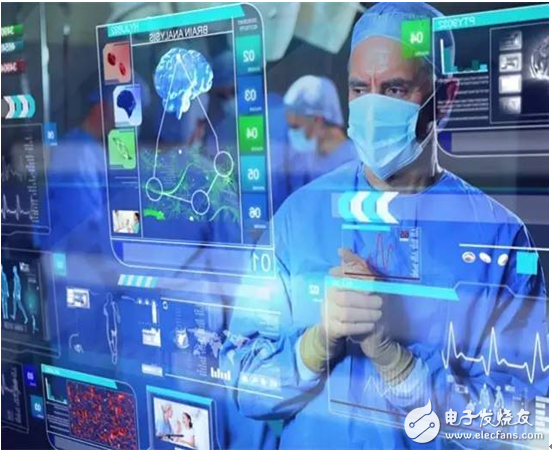With the rapid development of the Internet of Things, users are increasingly demanding ultra-low power consumption, ultra-large connectivity, super coverage and ultra-low-cost access. Low-power wide-area LPWAN has become one of the key technologies of the Internet of Things. As a LPWAN cellular solution customized by 3GPP for operators, NB-IoT adopts ultra-narrowband, repetitive transmission, and reduced network protocol design to meet the connection requirements of the Internet of Things. Therefore, it has become the current operator to vigorously promote the application of IoT applications. One of the reasons.

The Internet of Things is eager for a strong cellular IoT infrastructure network, and NB-IoT is undoubtedly the best choice for this infrastructure. Based on the application advantages of NB-IoT, it will bring the development of emerging markets of animal networking, including the stock market, bringing great commercial value to operators, including the value of connectivity, the value of data and the value of benefit sharing.
Medical Internet of Things refers to the process of interacting and merging the “objects†(objects of doctors, patients, instruments, etc.) and “nets†(standard-based processes) in the medical field, that is, forming a “linkâ€. The patient only needs to wear the instrument at home, and open the switch to transmit the test data to the "cloud". Doctors can diagnose the data in real time even if they have network and mobile phones, computers and other equipment.
Market research firm eMarketer predicts that by 2020, the market value of the Internet of Things in the medical field will reach $163 billion, with a compound annual growth rate of 38.1% between 2015 and 2020.

NB-loT landing smart medical
2016, with the international wireless standards organization 3GPP Release narrowband Internet of Things (NB-IoT) after the core standards, significantly speed networking industry, and medical things is most likely the first breakthrough to achieve large-scale vertical landing One of the areas.
Huawei and Lexin Medical and Guangdong Unicom completed the commissioning of the intelligent sphygmomanometer based on the NB-loT network environment of Guangdong Unicom.
Since its establishment in 2002, Lexin Medical has been focusing on smart health. At present, it focuses on the two directions of “smart wear†and “mobile medical careâ€. This time, we started cooperation with Huawei and China Unicom and selected the application scenarios of the intelligent sphygmomanometer. We not only fully utilized the research and development advantages of Lexin medical intelligent hardware devices, but also enabled NB-IoT technology through real business needs and scenarios. Convergence, let it get real landing. As the world's first NB-IoT health medical device, the NB-IoT smart sphygmomanometer will also gain wider popularity and further create a new generation of smart and healthy lifestyle for users.
In the Internet of Things era, the Internet of Everything has jumped from mobile computers to everything, such as your smart blood pressure monitor, your smart bracelet or watch and other smart wearable devices. The environment is not limited to indoors, but extends to the entire city. The NB-IoT technology can maximize the data transmission efficiency of these devices, and is more suitable for various outdoor environments and special populations, making the intelligent hardware devices with communication functions easier to use and more versatile.
With the leading NB-IoT technology, we believe that more and more healthy medical equipment will be connected in the future to provide users with more convenient and professional intelligent health services.

The transformation of the Internet of Things in the Internet of Things is multifaceted, saving medical costs and hospital administrative expenses. NB-loT technology has an inter-generational significance for the field of smart medical devices. For example, medical care, the remote monitoring platform can automatically collect a number of vital signs data, and then automatically upload the data to the hospital control center, analyze the data in real time and alert, and provide remote medical services by doctors. With a variety of portable devices, data collection is not limited by time and location.
Internet of Things technology can change the hospital's workflow and improve the overall efficiency of medical services. Under the Internet of Things technology, sensor devices sense the real-time status and upload it to the hospital data center to improve the utilization of medical personnel, equipment and places. After implementing the IoT operation plan, significant administrative costs can be saved.
Today, there are many wireless communication technologies for the Internet of Things, including short-range communication technologies such as WiFi and Bluetooth, and wide-area communication technologies such as 2/3/4G cellular communication technology. High-speed services mainly use 3G and 4G technologies; medium-rate services mainly use GPRS technology. NB-IoT cellular technology (narrow-band cellular Internet of Things), as the global unified mobile Internet of Things standard, relies on cellular networks to build a network with wide coverage, low power consumption and large connectivity. It is the best solution in the LPWA field and can meet low speed. Multiple application scenarios for the business. NB-IoT will make the Internet of Things truly fragmented and help the vertical industry accelerate the informationization upgrade.
At present, the application of the Internet of Things mainly uses WiFi and Bluetooth technology, and the data accuracy is very low and the power consumption is extremely large. However, if you use NB-IoT to organize the Internet of Things, it will bring a comprehensive cellular data connection network for the Internet of Things era, which can fully meet the Internet of Things needs of enterprises, individuals and households. It can truly realize a network in the whole city, which is easy to maintain and manage. . With the deployment of large-scale IoT networks of the three major operators, the scale of NB-IoT will become an important breakthrough point for the popularity of the Internet of Things. The NB-IoT network will be widely used in smart medical care.

IoT medical treatment can reduce the cost of medical treatment and alleviate the problem of medical treatment. However, IoT medical care is still in the experimental stage, and there are still many problems to be overcome.
First, technical problems. In a typical IoT implementation, hospitals may use multiple vendors and device types, and the complexity of managing multiple devices is daunting for many hospitals. Involving manufacturers, hospital management, technology, standards, etc., there are many challenges.
The second is the security issue. Safety is also one of the important factors driving the development of IoT medical care. The Internet of Things needs to connect a large number of devices, and if one of the nursing links is hacked, it will cause the entire IoT plan to be put on hold. As more and more IoT medical devices connect to the network, ensuring the security of these devices and preventing attacks and damage is important, adding advanced security features to IoT healthcare systems is key.
From the perspective of global NB-IoT commercial use, China is the most motivated in the advancement of NB-IoT. NB-IoT is indeed supported by the industrial ecology in China. Operators, equipment vendors, chip manufacturers and terminal manufacturers are preparing for commercial use. Whether NB-IoT can move towards commercial scale as soon as possible in the field of smart medical care will have a positive impact on other industry applications. We will wait and see.

The Internet of Things is eager for a strong cellular IoT infrastructure network, and NB-IoT is undoubtedly the best choice for this infrastructure. Based on the application advantages of NB-IoT, it will bring the development of emerging markets of animal networking, including the stock market, bringing great commercial value to operators, including the value of connectivity, the value of data and the value of benefit sharing.
Medical Internet of Things refers to the process of interacting and merging the “objects†(objects of doctors, patients, instruments, etc.) and “nets†(standard-based processes) in the medical field, that is, forming a “linkâ€. The patient only needs to wear the instrument at home, and open the switch to transmit the test data to the "cloud". Doctors can diagnose the data in real time even if they have network and mobile phones, computers and other equipment.
Market research firm eMarketer predicts that by 2020, the market value of the Internet of Things in the medical field will reach $163 billion, with a compound annual growth rate of 38.1% between 2015 and 2020.

NB-loT landing smart medical
2016, with the international wireless standards organization 3GPP Release narrowband Internet of Things (NB-IoT) after the core standards, significantly speed networking industry, and medical things is most likely the first breakthrough to achieve large-scale vertical landing One of the areas.
Huawei and Lexin Medical and Guangdong Unicom completed the commissioning of the intelligent sphygmomanometer based on the NB-loT network environment of Guangdong Unicom.
Since its establishment in 2002, Lexin Medical has been focusing on smart health. At present, it focuses on the two directions of “smart wear†and “mobile medical careâ€. This time, we started cooperation with Huawei and China Unicom and selected the application scenarios of the intelligent sphygmomanometer. We not only fully utilized the research and development advantages of Lexin medical intelligent hardware devices, but also enabled NB-IoT technology through real business needs and scenarios. Convergence, let it get real landing. As the world's first NB-IoT health medical device, the NB-IoT smart sphygmomanometer will also gain wider popularity and further create a new generation of smart and healthy lifestyle for users.
In the Internet of Things era, the Internet of Everything has jumped from mobile computers to everything, such as your smart blood pressure monitor, your smart bracelet or watch and other smart wearable devices. The environment is not limited to indoors, but extends to the entire city. The NB-IoT technology can maximize the data transmission efficiency of these devices, and is more suitable for various outdoor environments and special populations, making the intelligent hardware devices with communication functions easier to use and more versatile.
With the leading NB-IoT technology, we believe that more and more healthy medical equipment will be connected in the future to provide users with more convenient and professional intelligent health services.

The transformation of the Internet of Things in the Internet of Things is multifaceted, saving medical costs and hospital administrative expenses. NB-loT technology has an inter-generational significance for the field of smart medical devices. For example, medical care, the remote monitoring platform can automatically collect a number of vital signs data, and then automatically upload the data to the hospital control center, analyze the data in real time and alert, and provide remote medical services by doctors. With a variety of portable devices, data collection is not limited by time and location.
Internet of Things technology can change the hospital's workflow and improve the overall efficiency of medical services. Under the Internet of Things technology, sensor devices sense the real-time status and upload it to the hospital data center to improve the utilization of medical personnel, equipment and places. After implementing the IoT operation plan, significant administrative costs can be saved.
Today, there are many wireless communication technologies for the Internet of Things, including short-range communication technologies such as WiFi and Bluetooth, and wide-area communication technologies such as 2/3/4G cellular communication technology. High-speed services mainly use 3G and 4G technologies; medium-rate services mainly use GPRS technology. NB-IoT cellular technology (narrow-band cellular Internet of Things), as the global unified mobile Internet of Things standard, relies on cellular networks to build a network with wide coverage, low power consumption and large connectivity. It is the best solution in the LPWA field and can meet low speed. Multiple application scenarios for the business. NB-IoT will make the Internet of Things truly fragmented and help the vertical industry accelerate the informationization upgrade.
At present, the application of the Internet of Things mainly uses WiFi and Bluetooth technology, and the data accuracy is very low and the power consumption is extremely large. However, if you use NB-IoT to organize the Internet of Things, it will bring a comprehensive cellular data connection network for the Internet of Things era, which can fully meet the Internet of Things needs of enterprises, individuals and households. It can truly realize a network in the whole city, which is easy to maintain and manage. . With the deployment of large-scale IoT networks of the three major operators, the scale of NB-IoT will become an important breakthrough point for the popularity of the Internet of Things. The NB-IoT network will be widely used in smart medical care.

IoT medical treatment can reduce the cost of medical treatment and alleviate the problem of medical treatment. However, IoT medical care is still in the experimental stage, and there are still many problems to be overcome.
First, technical problems. In a typical IoT implementation, hospitals may use multiple vendors and device types, and the complexity of managing multiple devices is daunting for many hospitals. Involving manufacturers, hospital management, technology, standards, etc., there are many challenges.
The second is the security issue. Safety is also one of the important factors driving the development of IoT medical care. The Internet of Things needs to connect a large number of devices, and if one of the nursing links is hacked, it will cause the entire IoT plan to be put on hold. As more and more IoT medical devices connect to the network, ensuring the security of these devices and preventing attacks and damage is important, adding advanced security features to IoT healthcare systems is key.
From the perspective of global NB-IoT commercial use, China is the most motivated in the advancement of NB-IoT. NB-IoT is indeed supported by the industrial ecology in China. Operators, equipment vendors, chip manufacturers and terminal manufacturers are preparing for commercial use. Whether NB-IoT can move towards commercial scale as soon as possible in the field of smart medical care will have a positive impact on other industry applications. We will wait and see.
MICROBITS TECHNOLOGY LIMITED , https://www.hkmicrobits.com
![<?echo $_SERVER['SERVER_NAME'];?>](/template/twentyseventeen/skin/images/header.jpg)